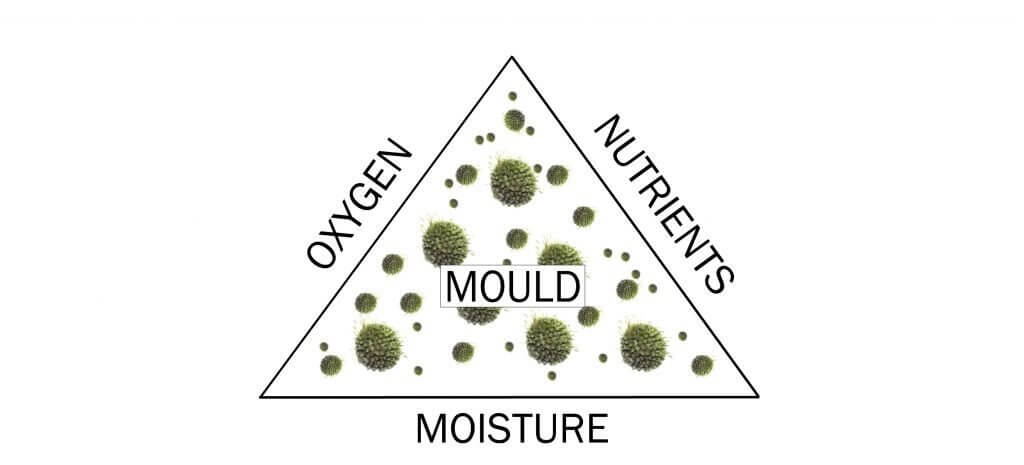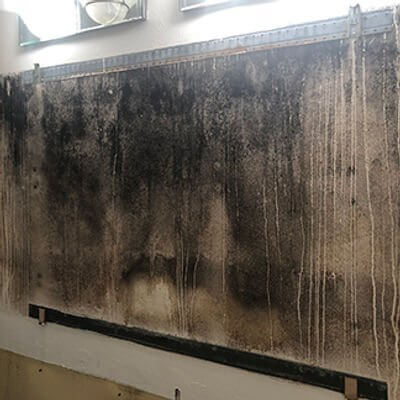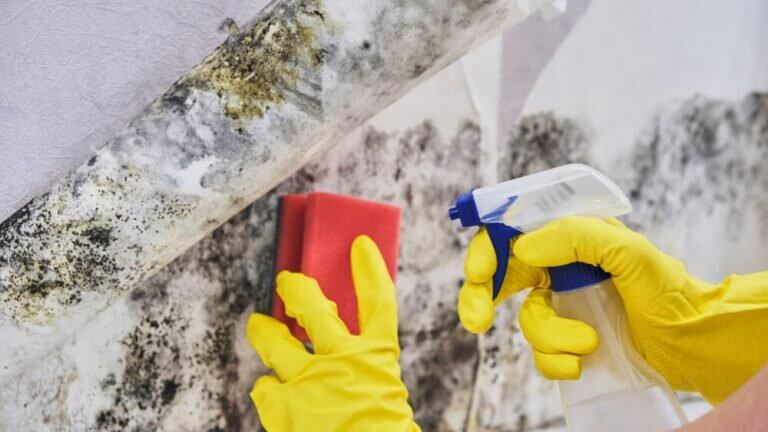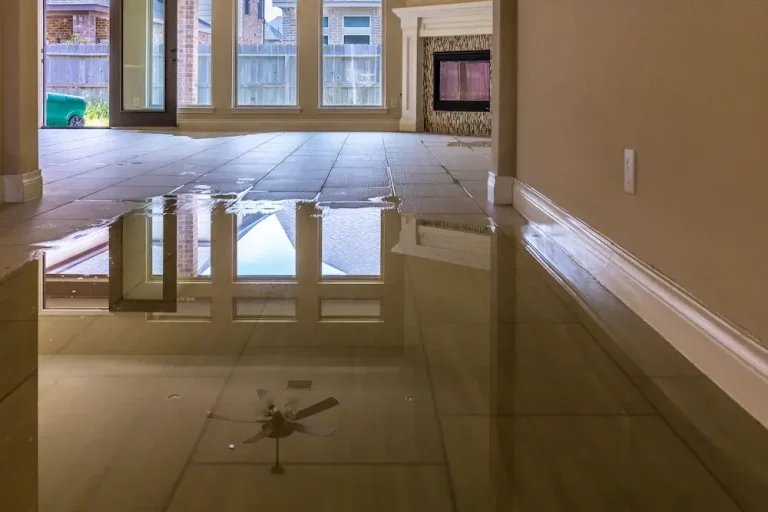DIY or professional mould removal? The choice is yours; make an informed decision with Restoration Specialists.
Before you make this decision, it’s best to understand how mould grows and the health effects it may produce. Then we can discuss the ways to stop mould in its tracks and remove it.
Why does mould grow?
Mould needs three conditions to grow. In particular quantities, it can thrive, and the reverse is also true. Remove the ideal growing conditions, and you will be able to inhibit and even eliminate mould from your indoor environment.
Oxygen; Naturally occurring in our indoor environment, we need it to survive, and so does mould.
Nutrients; Mould requires food. Preferably a cellulose material. Cellulose is the description of an organic material versus synthetic. Examples being timber, paper, soil, dirt, non-synthetic material etc.
Moisture; Mould will thrive in a wide range of moisture levels. New Zealand being an island nation, is typically prone to high humidity, which is optimal for mould growth.
Given the above conditions, other factors will also determine the speed of growth and fungi type. These are temperature, light conditions and the PH of the material.

Mould related health issues
Mould causes various symptoms in each individual. Depending on age, current health condition and sensitivities, each person’s ability to be affected by a mouldy environment is different.
Allergic Disease; When exposed to the affected environment, asthma and common cold or flu symptoms.
Toxic Disease; As a result of inhalation of mycotoxins created by mould, effects can occur. Toxic mould exposure can cause more serious, long-term effects like memory loss, insomnia, anxiety, depression, trouble concentrating, and confusion.
Hypersensitivity; Hypersensitivity pneumonitis (HP) is similar to flu-like symptoms. Headache, fatigue, body aches etc. When removed from the environment, their symptoms disappear.
How to remove mould from my house
With precision instruments and some building knowledge, you can determine the issues you have and how to mitigate or even eliminate these.
Environment
To prevent growth inside the home, you have to control the environment. Specifically, removing high moisture content from the indoor environment will be the key to eliminating excessive mould growth and improve your indoor air quality.
Mitigation of moisture can be expensive. However, investing in some of these items may save you costly repairs in the future.
Use ventilation systems to remove excessive moisture build-up in parts of your home and filter the air supply. Either balanced or positive pressure systems depending on your buildings airtightness, can be used.
Dehumidifiers and air purifiers can also assist in moisture removal and air filtration, providing better indoor air quality and reducing the likelihood of mould growth. Unfortunately, the size of these mitigation devices will only be suitable for small areas. Many are undersized to be able to deal with high moisture and air pollution.
Diagnosis of the building design, air quality, and moisture issues may need to be undertaken by a professional with correct instrumentation to give you the best mitigation solution for your property.
Current microbial growth
Once mould and microbial growth starts, you must move quickly to eliminate the colony, limiting the spread of spores and their ability to start a new colony. Many buildings that are left to generate large spore counts will have above average colony populations.
If left, you may be unable to stop the regrowth cycle and will need to employ a professional mould removal company.
If you are looking to treat the mould growth yourself, the “off the shelf” products you use have access to may not be as effective as the type professionals use.
Many biocides such as bleach are dense and can not penetrate the materials to remove the hyphae root system. When used on painted plasterboard, many DIY-ers will experience regrowth in just weeks.
Professional products and processes will remove the entire mould ecology, including the root system, to ensure regrowth does not occur.

What about my air supply? Indoor air quality is most important
The most fundamentally overlooked aspect of mould remediation is the indoor air quality. Although the ugly dark staining of the black mould is unsettling, the air quality is the part that affects your health.
How will you treat your indoor air quality? The simple fact is that most DIY capable people will lack the equipment and verification required to ensure healthy air quality in a building.
In mould affected environments, high quantities of mould spores and respirable mycotoxins are present. You must remove the particulates for the sake of indoor air quality. Consideration must be whether you can do this DIY or whether a professional is the best option.
Verification – How to tell when the air is clear?
As with any service, there needs to be verification of successful mould removal. A completion test should include the visual inspection of the mould growth and air samples to identify air quality. Aero cell, spore trap samples are an available service. The American Industrial Hygienist Association says spore trap sampling should only indicate speciation. This test’s spore counting function is only indicative, as inaccuracies mean it does not prove air quality. There are no standards for these tests either, which makes setting unsafe levels interpretive at best.
The use of particle counting is best. It has standards that we refer against to analyse indoor air quality. This way, we are not only removing spores and mycotoxins, but we are also cleaning the air of all particulate regardless of type and species.
Mould removal and indoor air quality are complex. Removal of contaminants is essential for your health. You spend a large number of hours in a day indoors, especially where you sleep. You deserve to know that the air is in the best possible condition. Verification of this alone makes hiring a professional worth it.
For more information related to mould please link with any of the websites below.
Institute of Inspection Cleaning & Restoration Certification – https://www.iicrc.org/
Restoration Industry Association – https://www.restorationindustry.org/




